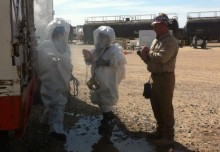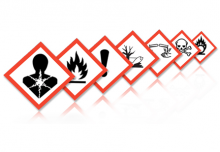Importance of Near Miss Reporting
Near miss reporting should be a part of every employer’s safety program. Near miss reporting is a proactive leading indicator (leading indicators described here in our previous article) of your safety management system. What is a near miss? A basic definition would be an event that does not result in an injury or damage. According to this OSHA article, one of their Safety and Health Management Program Fact Sheets, they describe near miss more precisely.
NEAR MISS – Near misses describe incidents where no property was damaged and no personal injury sustained, but where, given a slight shift in time or position, damage and/or injury easily could have occurred.
So then, what is an incident? In the same fact sheet, OSHA defines…
INCIDENT – An incident is an unplanned, undesired event that adversely affects completion of a task.
While the descriptor “near miss” is the OSHA term, some safety programs refer to near miss as near hits or close calls. Whatever you prefer to call them, the data collected from near misses is vital for your safety program. You want employees empowered to identify conditions and behaviors that could cause injury or damage and correct those conditions/behaviors before the incident happens.
Why do you want employees to collect this information? All of the successful safety management programs allow employees to have ownership and accountability for what happens in their area, and that ownership/accountability grants the empowerment employees need to report and correct hazards.
Is it a near miss if someone trips over an extension cord lying on the floor but doesn’t fall? Is the extension cord lying on the ground, itself, a near miss? Many management teams struggle with these same questions. An extension cord lying on the floor is a hazardous condition. It does not become a near miss until someone’s actions are involved.
Let’s think about the example of an extension cord lying on the floor. While it may be hazardous condition, it will not cause an injury to an employee until the employee interacts with it, such as stepping over it. Maybe employees are able to step over a cord a dozen times without any consequences. However, the one time that someone drags their foot and stumbles but doesn’t fall, now you have a near miss. If someone chooses not to report the near miss, either from fear of embarrassment or fear of getting in trouble, then the possibility of another employee falling and actually hurting themselves is still a potential.
If the near miss is reported, you now have the ability to communicate and correct the situation and similar situations. Once management has this information, an investigation and corrective actions need to be discussed and addressed. These investigations do not need to be lengthy, but should follow your investigation and corrective action program. A cord cover, taping the cord to the floor or moving the work so the cord doesn’t cross a walking path could make the difference. Taking the extra 5 minutes (probably less than 5 minutes) to secure a cord could prevent a costly incident. This is why educating and empowering employees to report and correct, even the seemingly minor incidents, is crucial to your safety program.
Workforcesafety.com has a simple form (click here for form) that you can have your employees fill out to report near misses. Once they are reported, management has the responsibility to investigate and ensure that corrective actions were taken.
Understand that training your employees to recognize hazardous conditions along with the behavior that could cause an injury is the information you want them to capture. Reporting near misses can provide a positive leading indicator of your safety management system and a proactive step to reduce injuries.














